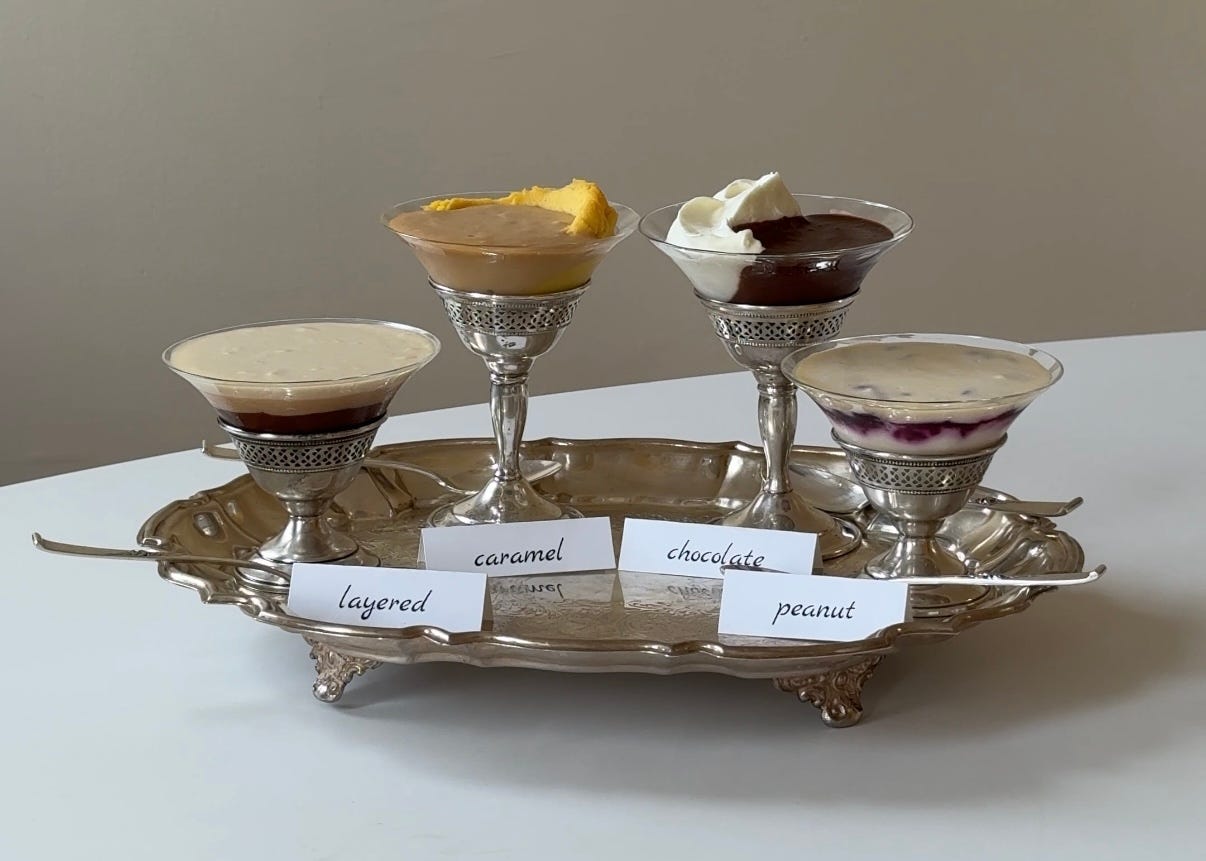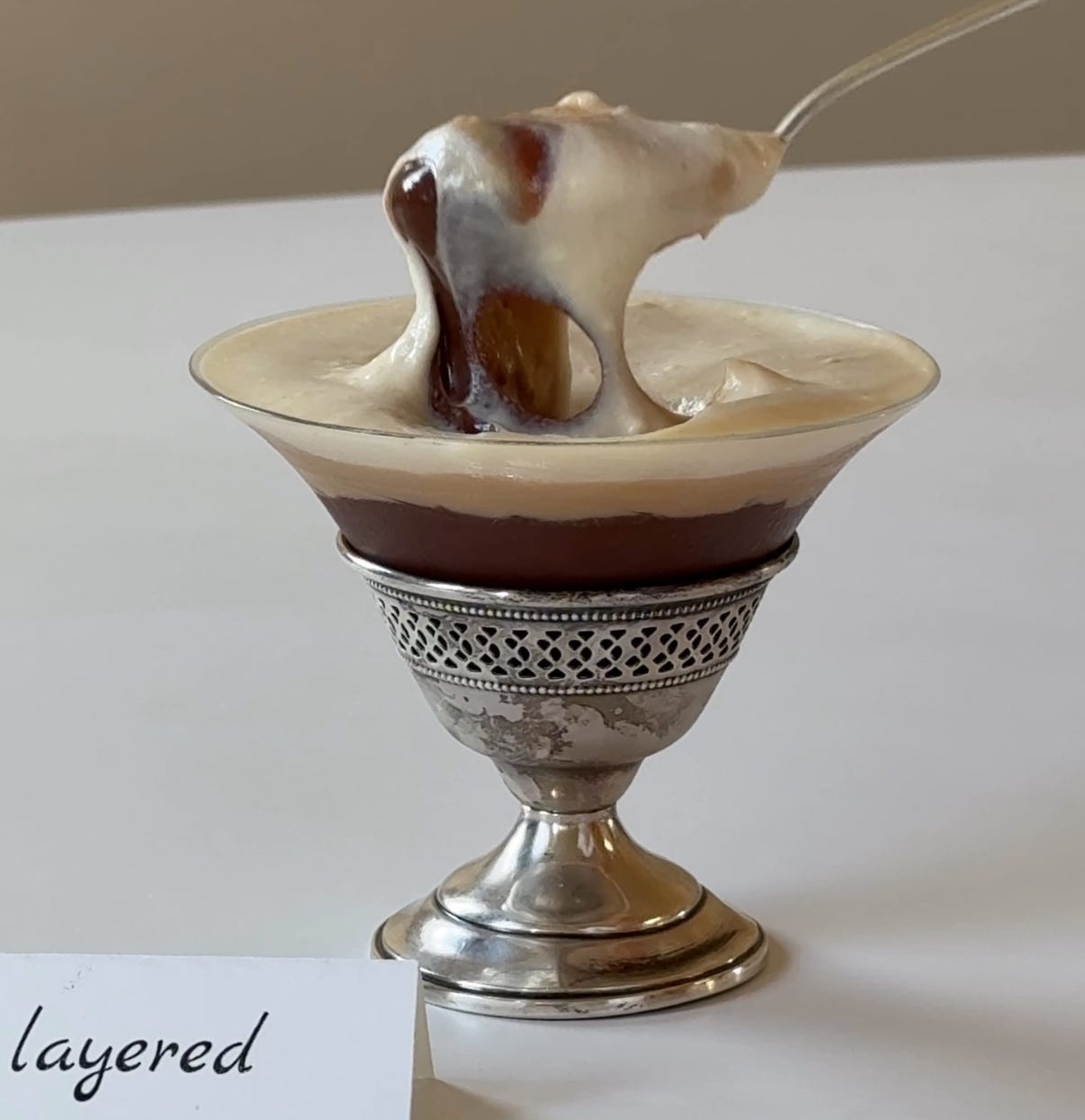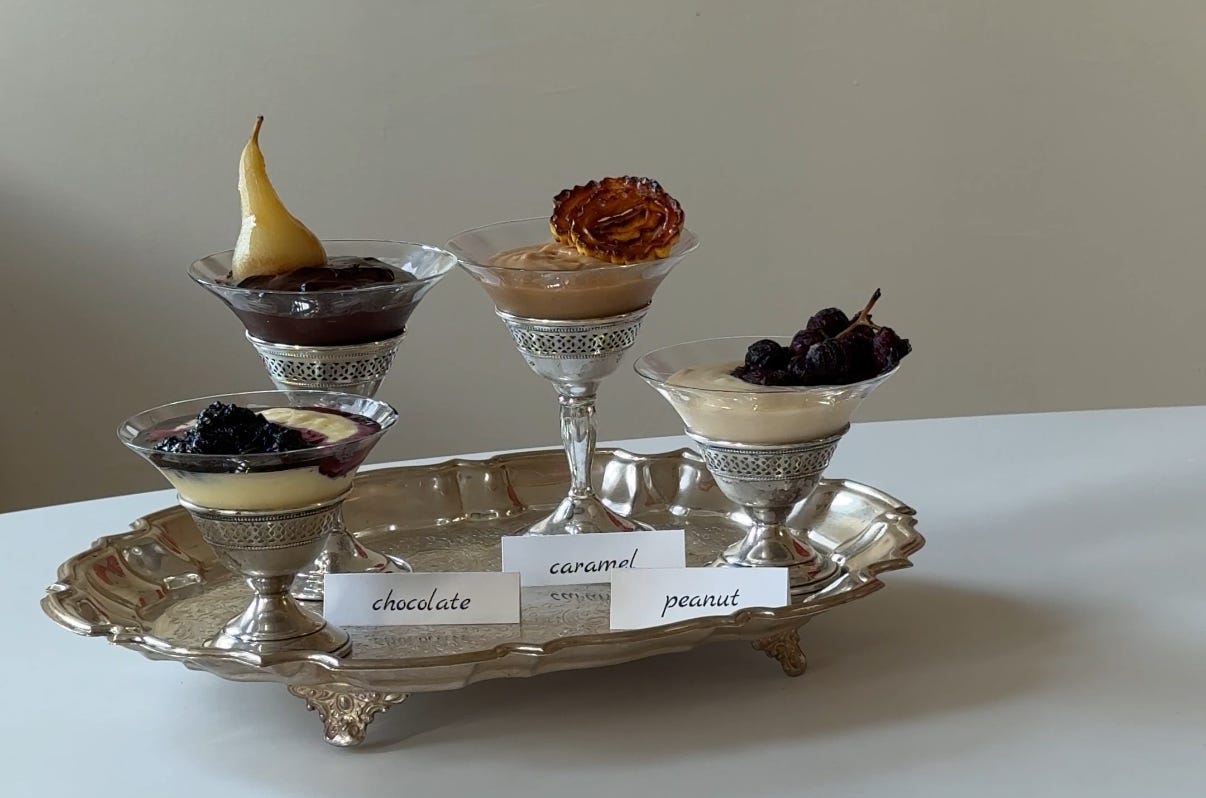Chocolate, Caramel, & Peanut Puddings + Pairings & Plating
Baking Blocks: Pudding Pt. 2
Baking Blocks is a brand new series! Each post will introduce a baking/pastry fundamental in its simplest form, and show you how to customize it. Then you can experiment, add different flavors, and tailor it to your tastes.
This weekend I’ll be joining over 100 chefs participating in the great community bake sale organized by
! you can find more details & tickets here (1 ticket = 1 pastry, & i’ll be bringing s’more-ish - see photo below), looking forward to seeing you on Saturday!Earlier this month, I introduced a plain vanilla pudding with inclusions such as infusions, essences, extracts, egg yolks, butter, and various sweeteners.

These recipes stem from that plain pudding recipe, but they’re chocolate, caramel, and peanut puddings, not vanilla. They are all so rich and intensely flavorful, and–like the base recipe–there is no butter or eggs, just plain pudding. This means you get intense and un-muddled flavors, and you can continue to customize from there.
I loved adding smoked black tea to the chocolate pudding and finishing the caramel pudding with brown butter. I also feel like raw sugar in the peanut butter pudding would’ve been great, but I didn’t think of it in time.
These puddings are so intensely flavored, but also so singular in their flavor profile, that they’re really nice when complemented with something else. I had originally paired them with whole roasted fruits, but–while I loved the flavor pairings–I realized it wasn’t so easy to eat.
Instead, I suggest pairing these puddings with roasted mashed/pureed fruits (I would not suggest a jam–too much sugar), or with sour cream (or crème fraîche) whipped cream. These combos are so well balanced, and they allow for some fun with the plating.

I paired roasted concord grapes with the peanut butter pudding. As the grapes roast, the flavor intensifies, and they start to slip right out of their skins. I layered the pudding by decanting half of it, letting it set up in the fridge for a few hours, adding the roasted grapes, and then spooning the rest of the pudding on top (fyi this method works only if you are re-whisking and then decanting your pudding).
For the caramel pudding, I roasted some fall squash until soft and creamy (kabocha would be a great choice), put it in a pan, and mashed it with some butter, sugar, and salt (and i should have added some spices). I reduced it until thick and jammy, and then put it in a blender with cream and in until thick enough to hold its shape. I let it cool off a bit before plating with a swoosh, cleaning any mess with a vodka-soaked paper towel, and–finally–pouring in the re-whisked pudding.
The black tea and chocolate pudding was just so perfect as is; I didn’t want to add anything too flavorful to it. It’s best with sour-cream whipped cream (for a little tang and stability). I layered it up like the version above, but just plopped the whipped cream into the side of the glass instead of swooshing it over. I find that folding the whipped cream a few times helps get a nice shape when plating.
If you don’t like all-soft desserts, then this dessert is not for you. I personally appreciate the two different soft textures, but if that’s not your thing, you can finely dice the fruit so that it has a bite but can be eaten with a spoon.
This is a low-effort, but delicious, homemade dessert where all the components can be made in advance. It allows you to get creative with your flavor pairings and present something reflective of you (and whatever else you are serving) and your tastes.
Again, I’m here in the comments section for any advice on inclusions or pairings! Or if you just want to share any ideas you’re excited about :)
You can also find ingredient information and tips for conversions on my conversion cheat-sheet page. If you have any further questions, please feel free to leave a comment!
Keep reading with a 7-day free trial
Subscribe to Playing With Food to keep reading this post and get 7 days of free access to the full post archives.




